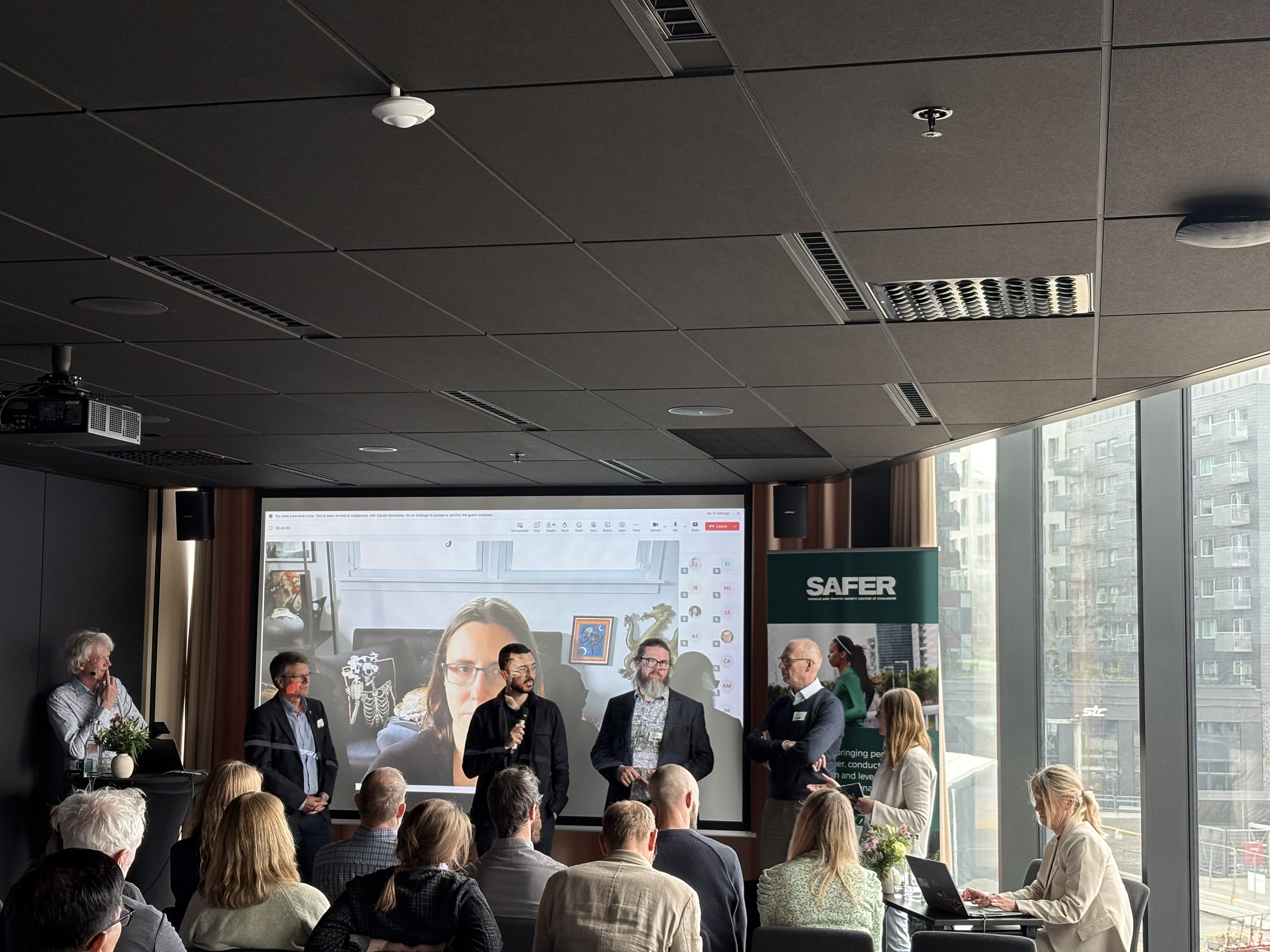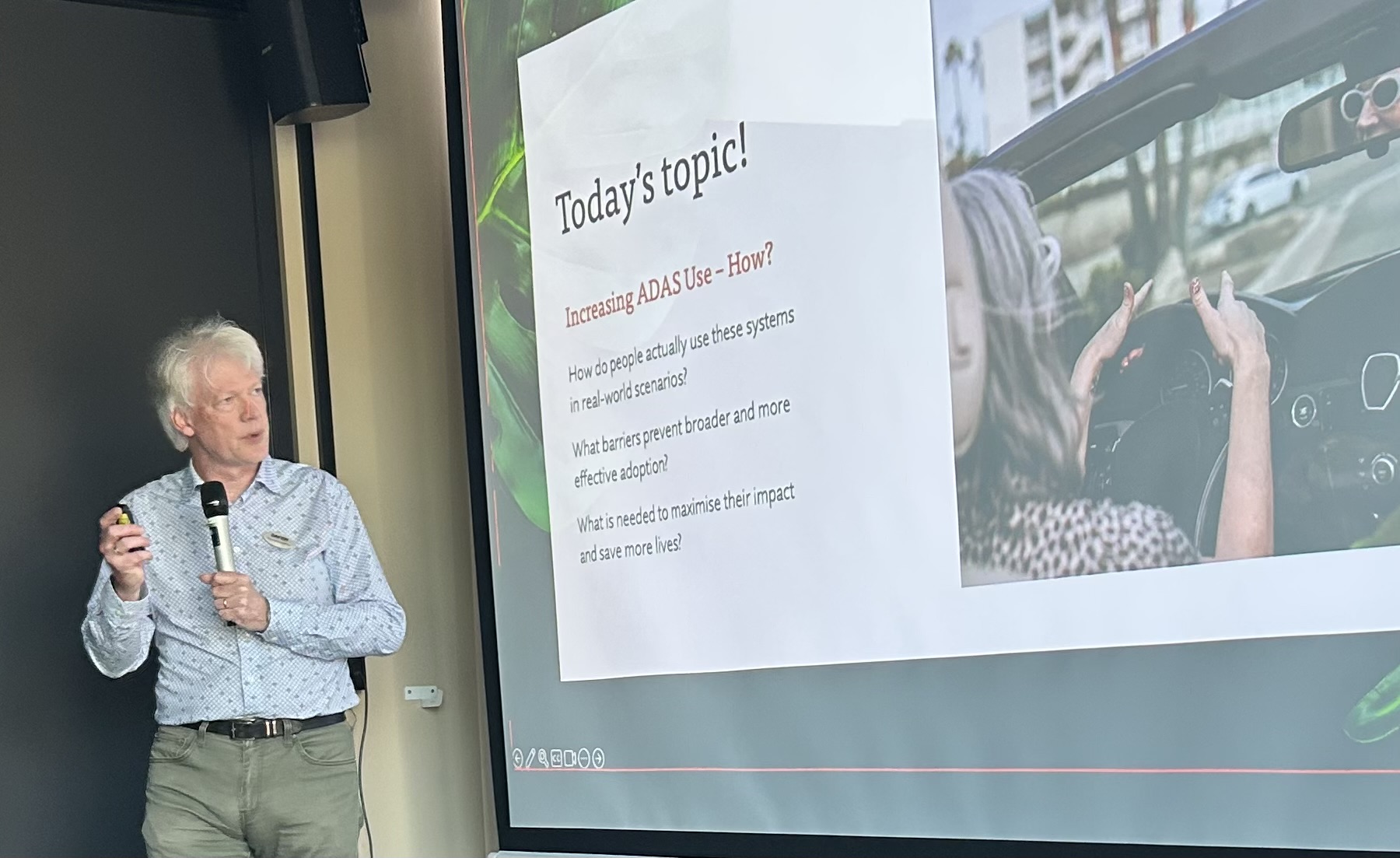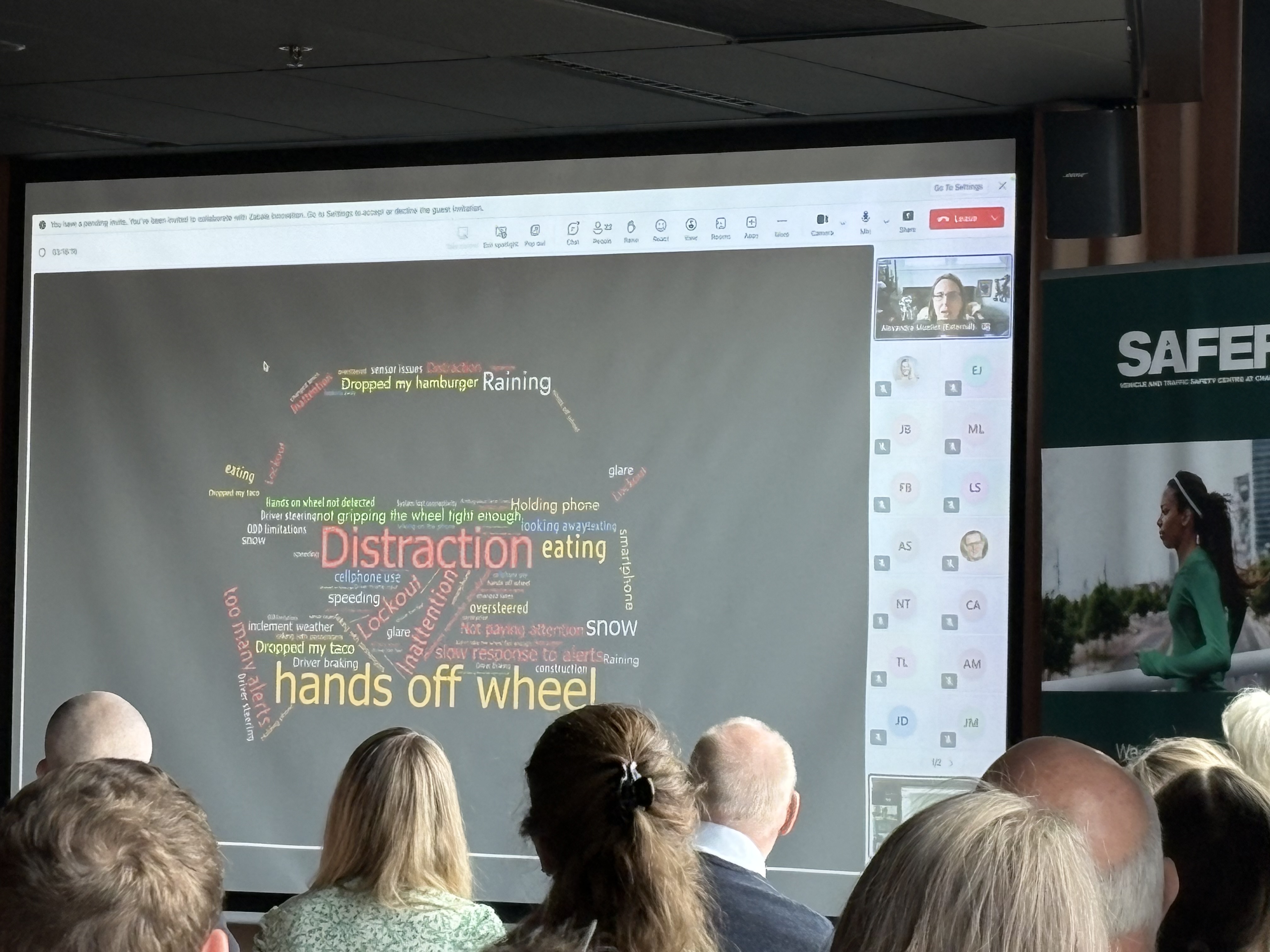Unlocking the Full Potential of ADAS – Highlights from SAFER Research Day
How can we ensure that Advanced Driver Assistance Systems (ADAS) are used effectively in real-world conditions?
That was the central question at SAFER’s Research Day on 6 May, themed "ADAS & Human Interaction – Unlocking the Full Potential", which brought together more than 120 participants at Clarion Hotel Karlatornet in Gothenburg and online.
The event featured speakers from leading research organisations and industry partners, exploring how ADAS can save lives, if used and designed in the right way.
Key insights from the day:
- Anders Kullgren, Folksam: ADAS systems show clear crash-reducing potential for cars (up to 40%), but are underused—often due to poor user experience, lack of knowledge, or system limitations.
- Johan Karlsson, Cognitian (ADAPTIN): Presented concepts for adapting ADAS behaviour in real time based on the driver's state (fatigue, distraction), allowing more proactive safety measures.
- Daban Rizgary, RISE (Enhanced ADAS II): Emphasised the need for explainable, dynamic HMIs to improve trust and usability.
- Paul Hemeren, University of Skövde (I2Connect): Showed promising results using machine learning to prevent collisions, especially between trucks and vulnerable road users.
- Anna Sjörs Dahlman, VTI (HEIDI): Demonstrated a cooperative HMI concept that adapts to both driver and pedestrian behaviour—leading to improved interaction, safety, and trust.
- Alexandra Mueller (IIHS, USA): Shared behavioural studies showing how drivers interact with partial automation safeguards, and why acceptance is key over time.

Looking ahead: What does successful ADAS look like?
In the concluding panel, participants agreed:
“The technology is here. The next step is designing systems that are better aligned with human cognition, user needs and real-world conditions.”
What we take forward at SAFER:
- Understand and address why drivers don’t use available ADAS features.
- Strengthen cooperative and adaptive system design.
- Prioritise user research, trust, and communication.
- Improve system performance by reducing false alarms and increasing explainability.
Did you miss the event?
All materials is available at SAFER Inside here!
Thanks to all speakers and participants for pushing ADAS research forward - let’s keep the momentum going!


